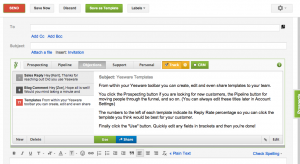Here are the investments marketers should make to gain a competitive edge while remaining privacy-safe.
Brands have to be proactive about the privacy concerns their customers have by being transparent in two important areas — customer experience (CX) and data collection and enrichment. Only in this way can brands build trust, and with that, a competitive edge.
“Brand trust is no longer just a customer demand, it’s an imperative,” said Lisa Campbell, CMO at security and governance company OneTrust at The MarTech Conference.
Customers and stakeholders expect brands to be transparent about what data is being collected and for what purpose.
Building transparent customer experiences
In order to build trust, brands need to support a transparent customer experience.
“If you want to be able to respect people’s privacy but also deliver a valuable personalized experience, you have to have a transparent customer experience to do both privacy and personalization,” said Campbell.
She added, “Every touch point that a customer has with your brand either builds trust or it breaks trust.”
Not only should brands be up front about privacy, but they should also provide a unified trust center for customers to access and learn more about privacy practices.
The trust center is a self-service hub that places customers in the driver’s seat so they won’t get information overload.
“Perhaps you start giving them more information than they expected, or quite frankly, didn’t want,” said Campbell.
Most importantly, the trust center allows customers to modify and personalize their experience based on what kinds of communications they’d like from the brand, and the data they’d like to share. It all comes back to experience.
Transparent data collection and enrichment
Brands build their valuable databases through a strategic, transparent collection of data that customers share, along with enrichment of data from other sources, as well as with identity resolution, analytics and other tools.
To build trust with customers while improving data assets, brands need to create a virtuous customer data cycle.
“If I build trust with you, you are going to be more likely to give me data and permission to use your data,” Campbell explained. “And when I have that data, what can I do? I can actually deliver more value to you. I can give you more valuable services, products and content. And so on.”
When customers see this exchange, they will consider sharing more information to get more personalization and better services.
“I trust you with this information, so I’m going to give you more of my information because I know you’re going to give me value,” Campbell said.
And with these improved customer experiences and improved data collection practices, brands will begin to gain a competitive advantage.
“Obviously it’s going to get better and better, and I think this is where you start to get competitive differentiation,” said Campbell.
When customers know more about the value they’re getting from a transparent data exchange, brands get more value, too. And these interactions become a foundation for building trust.
Redefining brand equity and trust: Blazing a trail forward in 2022 from Third Door Media on Vimeo.
The post 2 important ways to build customer trust and brand equity with data appeared first on MarTech.
MarTech(19)





